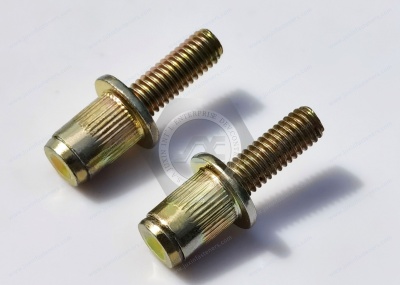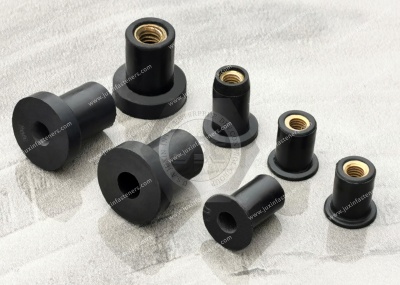Call Us
+86 136 6007 9809
Call Us
+86 136 6007 9809
Jun. 13, 2024
Automotive fasteners heat treatment process to improve the impact of bolt fatigue strength
Automotive fasteners come in a wide range of varieties, diverse types, and specifications, including the essential characteristics of the main. Their selection and use involve structural analysis, connection design, failure and fatigue analysis, corrosion requirements, assembly methods, and related product quality control and testing. These factors, to a large extent, determine the final quality and reliability of automotive products.
The fatigue life of automotive high-strength bolts has always been a problem that has been paid attention to, and the data show that the vast majority of bolt failures are caused by fatigue damage, and fatigue damage when the bolt is almost no sign, so major accidents can quickly occur when fatigue damage occurs. Heat treatment can optimize the fastener material properties so that its fatigue strength for the use of high-strength bolts more and more high requirements, through heat treatment to improve the fatigue strength of the bolt material is more important.
High-Strength Steel Hex Head Screws with Phillips Drive: When clearance for a wrench is limited, these screws have a Phillips drive so that you can install them with a screwdriver. With a tensile strength of 160,000 psi, they are stronger than Grade 8 screws and can be used in high-stress applications, such as valves, pumps, motors, and automotive suspension systems. The cadmium plating provides good corrosion resistance to salt water. Screws meet NAS (National Aerospace Standards) specifications for material and construction. Length is measured from under the head.
Match the thread spacing of mating components. Coarse threads are the industry standard; choose these screws if you don't know the threads per inch. Fine threads are closely spaced to prevent loosening from vibration.
Alloy Steel Hex Drive Flat Head Screws: Made from alloy steel, these screws are nearly twice as strong as stainless steel flat head screws. They're angled under the head to sit flush within countersunk holes. Length is measured from the top of the head.
Screws with an undercut profile have a shallow head for use in thin materials.
Black-oxide alloy steel screws have mild corrosion resistance in dry environments.
Zinc-plated alloy steel screws resist corrosion in wet environments.
For high-quality High-Strength Steel Hex Head Screws with Phillips Drive fasteners and professional technical support, don't hesitate to co don't us at adelajonly@gmail.com or visit our website at [Juxin Fasteners]: https://www.juxinfasteners.com.


1. Material fatigue crack sprouting
Fatigue cracks start in the place known as the source of fatigue; the fatigue source for the bolt microstructure organization is compassionate and can sprout fatigue cracks on a tiny scale, generally in 3 ~ 5-grain size; bolt surface quality problems are the primary source of fatigue, most of which begins on the surface of the bolt or the sub-surface. Bolt material crystals, with the existence of many dislocations and some alloying elements or impurities, grain boundary strength differences, and these factors may lead to fatigue crack sprouting. Research shows that fatigue cracks are prone to the location of grain boundaries, surface inclusions or second-phase particles, and cavities; these locations are related to the complex and variable microstructure of the material. If the heat treatment can improve the microstructure, then it can improve the fatigue strength of the bolt material to a certain extent.
2. The effect of decarburization on fatigue strength
Bolt surface decarburization will reduce the quenched bolt surface hardness and wear resistance and significantly reduce the strength of the bolt fatigue. ISO standard has a decarburization test for bolt performance and the maximum decarburization layer depth. In the analysis of 35CrMo wheel bolts, fracture failure reasons were found in the thread and rod intersection because of the decarburization layer. Fe3C at high temperatures can be reacted with O2, H2O, and H2, leading to the reduction of Fe3C within the bolt material, thus increasing the ferrite phase of the bolt material, reducing the strength of the bolt material and making it easy to trigger microcracks. In the heat treatment process, to control the heating temperature, it must be used to protect the heating of the controlled atmosphere, which is an excellent solution to this problem.
3. Heat treatment on the impact of fatigue strength
Stress concentration on the surface of the bolt will reduce its surface strength when subjected to alternating dynamic loads; in the notch, stress concentration sites continue the micro-deformation and recovery process, and the stress it is subject to is much greater than the stress concentration of the parts, which is likely to lead to fatigue cracks.
Through heat treatment and tempering to improve microstructure, fasteners have excellent comprehensive mechanical properties, can improve the fatigue strength of the bolt material, and reasonable control of grain size to ensure low-temperature impact power and obtain a high impact toughness. Reasonable heat treatment to refine the grain and shorten the distance between the grain boundaries can prevent the generation of fatigue cracks in the material if there is a certain amount of whiskers or the second item of particles within the phase of these additions can be prevented to a certain extent to avoid the slip of the resident slip band slip, thus preventing the emergence and expansion of microcracks.
Contact Us
Tel.:
+86 020 8621 0320
+86 020 3121 6067
Technical Support:
Navigation
SEND INQUIREY